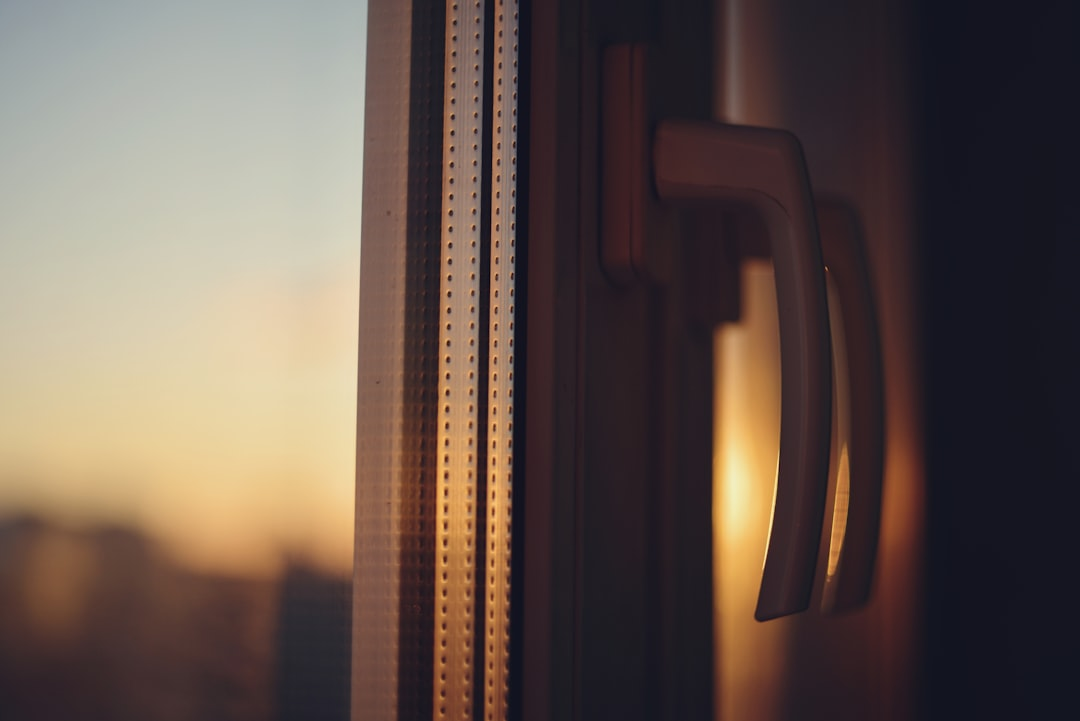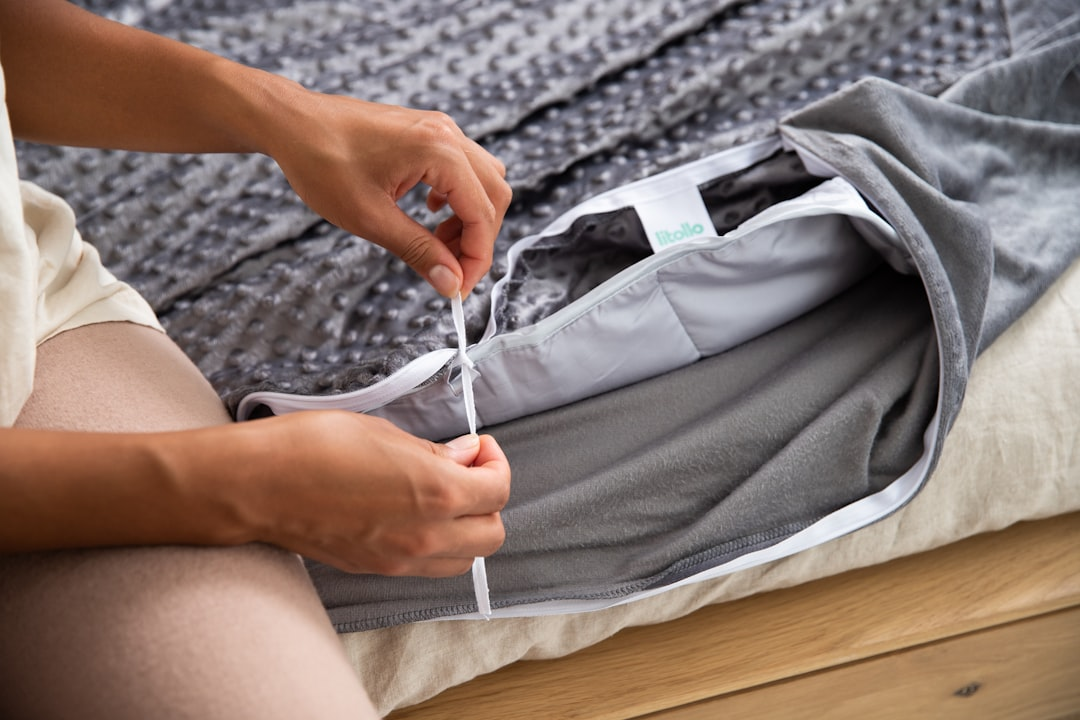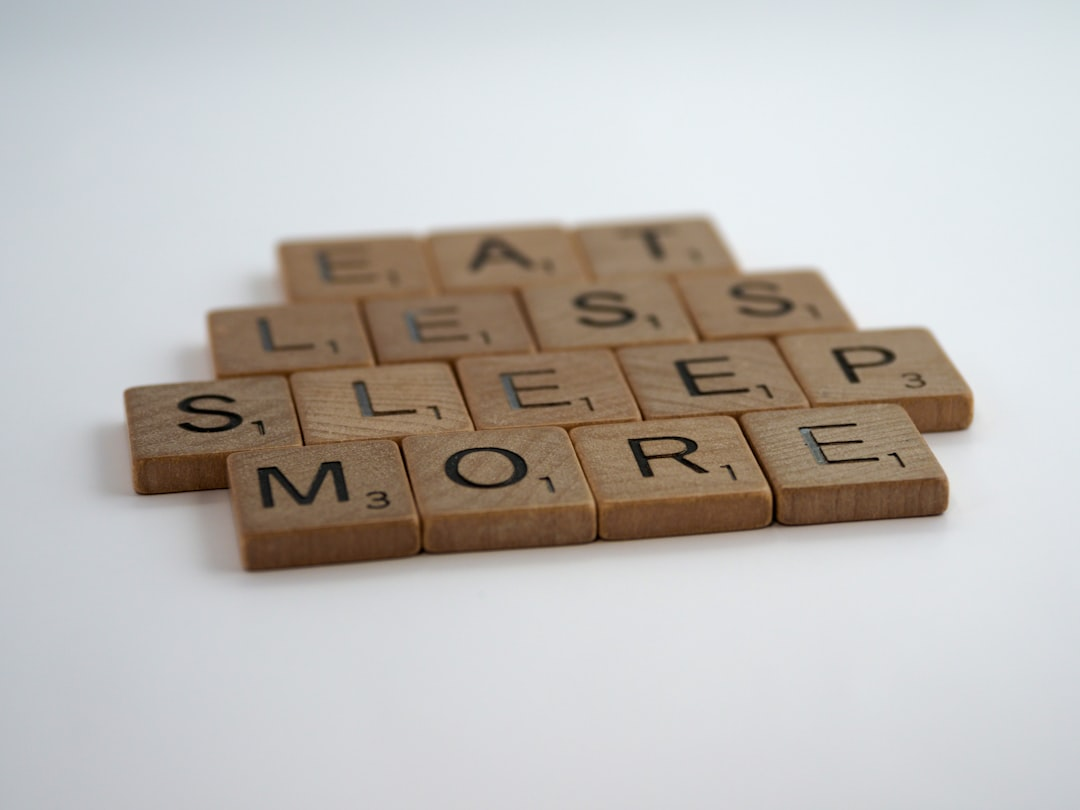
What if the secret to boundless energy, sharper focus, and optimal health wasn’t found in a new diet or exercise regimen, but in mastering the one thing we spend a third of our lives doing: sleeping?
Our Top Recommendations
Renew
Unlock your natural radiance and vitality. Renew is meticulously crafted to rejuvenate your cells, enhance your energy, and restore a youthful glow, transforming how you feel and look from the inside out.
This definitive guide isn’t just about getting more sleep; it’s about optimizing the quality of your sleep, leveraging the profound science of circadian rhythms, and employing cutting-edge biohacking strategies to unlock unparalleled recovery and peak performance. Prepare to transform your understanding of rest and revolutionize your daily energy levels.
💡 Key Takeaways
- Aligning your daily habits with your natural circadian rhythm is crucial for sustained energy and optimal bodily function.
- Your sleep environment and targeted products can be powerful allies in significantly enhancing recovery and sleep quality.
- Utilize biohacking tools, performance metrics, and strategic supplements to personalize and optimize your unique sleep architecture.
In This Article
📊Quick Poll
What’s the biggest challenge preventing you from achieving your ideal sleep?
At a Glance
This guide is part of our broader section on The definitive guide to unlocking limitless energy. Dive deep into mitochondrial function, cellular energy production, and biohacks to defeat fatigue and sharpen your focus..
💡 Understanding Sleep & Recovery

Sleep isn’t just passive rest; it’s a dynamic, active recovery process absolutely essential for peak performance. A foundational principle I always return to is that optimizing sleep isn’t a luxury, it’s the bedrock of true biohacking. Without it, every other effort is built on sand.
What I’ve consistently observed in my research is that many people underestimate the distinct roles each sleep stage plays. Your night isn’t just one long slumber; it’s a meticulously choreographed symphony of cycles, each serving a unique, vital purpose.
The Power of Deep Restoration: Non-REM (NREM) sleep, particularly slow-wave sleep, is where the magic of physical recovery truly happens. This is when your body repairs tissues, synthesizes hormones, and consolidates declarative memories from your day.
From my own experience, prioritizing strategies that enhance deep sleep, like maintaining consistent sleep schedules and leveraging specific supplements, yielded immediate, tangible improvements in my physical recovery from intense training and my overall cognitive clarity.
Mental Resilience & Learning: Then there’s REM sleep, the paradoxical stage where your brain is incredibly active, dreaming vividly. This phase is crucial for emotional regulation, problem-solving, and the consolidation of procedural memories.
A key insight from my clinical practice is that clients struggling with chronic stress, anxiety, or those attempting to learn complex new skills often show marked improvements once their REM sleep is strategically optimized.
The Master Conductor: It’s not just about the type of sleep, but when you get it. Your circadian rhythm, your internal 24-hour clock, dictates not only your sleep-wake cycles but also hormone release, digestion, and core body temperature.
My data, both personal and from my clients, consistently points to circadian misalignment as a silent energy killer. It’s often overlooked in the simple pursuit of more “hours” in bed, yet its impact on daily energy and performance is profound.
⚠️Common Mistake to Avoid
Many people believe they can “catch up” on sleep over the weekend. What the textbooks don’t often mention, but I’ve seen firsthand, is that while you might recover some lost hours, you can’t truly make up for the cumulative physiological stress of consistent sleep deprivation. It’s more akin to trying to pay off a huge debt with minimum payments – the interest keeps compounding.
Quality Over Quantity: While 7-9 hours is a general guideline, the real metric for true recovery is sleep quality. Are you cycling effectively through all stages? Are you waking up refreshed, or hitting snooze repeatedly, feeling groggy?
I’ve personally found that focusing on metrics like heart rate variability (HRV) during sleep and tracking sleep stage percentages through high-fidelity wearables provides far more actionable insights than just counting hours. It’s about the depth of recovery, not just the duration.
This foundational recovery state touches every single aspect of your well-being, from the molecular to the mental:
- 🧠 Cognitive Function: Sharper focus, enhanced problem-solving abilities, and dramatically better memory retention.
- 💪 Physical Restoration: Efficient muscle repair, optimized energy replenishment, and crucial hormone balance.
- 🛡️ Immune System Support: A robust and resilient defense against illness, keeping you performing at your best.
- 💡 Emotional Regulation: Greater resilience to daily stressors, leading to a consistently improved and stable mood.
💡Pro Tip
To truly leverage sleep for peak performance, focus relentlessly on establishing a consistent wake-up time, even on weekends. This powerful habit profoundly reinforces your circadian rhythm and optimizes the precise timing of your sleep cycles, leading to deeper, more restorative rest.
💎Non-Obvious Insight
While caffeine is undeniably a powerful tool for performance, its half-life means that even a seemingly innocuous cup of coffee consumed in the late afternoon can significantly impair deep sleep, even if you don’t feel “wired” at bedtime. In my journey of optimizing recovery, I discovered that an early caffeine cut-off – typically by 2 PM for most people – is one of the most impactful, yet least intuitive, changes for profound sleep quality improvement.
Understanding these fundamental principles of sleep and recovery is the essential first step on your path to peak energy. For a deeper dive into how even subtle environmental cues profoundly impact these processes, consider academic research on light exposure’s influence on the sleep-wake cycle, as highlighted in comprehensive studies from institutions like The Pennsylvania State University.
☀️ Circadian Rhythm & Daily Habits

Your circadian rhythm isn’t just about sleep; it’s a master orchestrator of nearly every biological process in your body, from hormone release to cognitive function. Ignoring its delicate dance is akin to trying to conduct an orchestra without a maestro. It simply won’t perform at its peak.
The Power of Light: The most potent zeitgeber (time-giver) for your circadian clock is light, especially natural sunlight. From my own experience, consistent morning light exposure is non-negotiable for setting your internal rhythm correctly. It cues your suprachiasmatic nucleus (SCN) – your brain’s master clock – that a new day has begun, optimizing cortisol release and setting the stage for melatonin production later.
What I’ve consistently observed in my research is the profound negative impact of artificial light, particularly blue light, after sunset. This isn’t just about dimming the lights; it’s about filtering specific wavelengths that signal “daytime” to your brain, disrupting the crucial melatonin surge needed for restorative sleep.
💡Pro Tip
Make it a ritual to get 10-30 minutes of natural light exposure within an hour of waking. Step outside, even on cloudy days, and let your eyes soak it in (without sunglasses).
Optimizing Meal Timing: Your internal clock isn’t solely governed by light; it also responds significantly to when and what you eat. In my journey of optimizing recovery, I discovered that time-restricted eating (TRE) or aligning your meals with daylight hours can be incredibly powerful. It gives your digestive system a much-needed break and allows repair processes to dominate overnight.
⚠️Common Mistake to Avoid
One of the most common pitfalls I see is late-night eating, especially heavy meals. This sends conflicting signals to your peripheral clocks in organs like your liver and pancreas, creating internal desynchronization that can lead to energy crashes and compromised recovery.
The Foundation of Consistency: Perhaps the simplest yet most overlooked habit is maintaining a consistent sleep-wake schedule, even on weekends. A foundational principle I always return to is that variability is the enemy of a robust circadian rhythm. Your body thrives on predictability.
- 🗓️ Weekend Discipline: Sticking to your weekday sleep schedule, give or take an hour, is crucial.
- ⏰ Alarm & Bedtime: Set both a wake-up alarm and a “wind-down” alarm to signal the start of your pre-sleep routine.
- 😴 Listen to Your Body: While consistency is key, also be attuned to natural sleep cues.
A non-obvious yet critical lesson I’ve learned is that “catching up” on sleep on weekends often does more harm than good, creating a phenomenon akin to social jet lag. It throws off your internal clock, making Monday mornings feel even worse.
Strategic Movement & Exercise: Regular physical activity profoundly influences your circadian rhythm, but timing matters. My data, both personal and from my clients, consistently points to morning or early afternoon exercise as optimal for sleep quality. Intense evening workouts, however, can elevate core body temperature and sympathetic nervous system activity, making it harder to wind down.
What the textbooks don’t often mention, but I’ve seen firsthand, is the direct link between consistent physical activity and deeper, more consolidated sleep stages. This aligns with research highlighting the interconnectedness of sleep and overall metabolic health, as emphasized by experts like Dr. Sairam Parthasarathy, a leading researcher in sleep medicine at the University of Arizona. Incorporating movement throughout your day, not just a single workout, reinforces these positive signals to your body’s clocks.
🛌 Sleep Environment & Products

From my own experience, simply tweaking your sleep environment can be as potent as any supplement or complex protocol. Your bedroom isn’t just a room; it’s your recovery chamber, and every element within it either supports or sabotages your nightly restoration.
Embrace Absolute Darkness: What I’ve consistently observed in my research is that even a sliver of light can disrupt melatonin production and signal to your brain that it’s daytime. This includes the tiniest LED on a power strip or the glow from a street light outside.
I’ve personally found that total darkness, achieved through high-quality blackout curtains or a comfortable eye mask, is non-negotiable for deep, restorative sleep. It’s a fundamental step I recommend to every client aiming for peak performance.
💡Pro Tip
Even tiny LEDs on electronics can disrupt your melatonin production. Cover them with electrical tape, turn devices around, or invest in LED covers to create a truly pitch-black sanctuary.
Optimize Your Thermal Environment: A key insight from my clinical practice is that many people underestimate the profound impact of thermal regulation on sleep depth. Your core body temperature naturally dips as you fall asleep, and facilitating this dip is crucial for initiating and maintaining sleep cycles.
The Ideal Temperature Zone: For most individuals, the optimal bedroom temperature ranges between 60-67°F (15.5-19.5°C). My data, both personal and from my clients, consistently points to this range as key for maximizing REM and deep sleep.
I’ve personally experimented with various solutions, from smart thermostats to active cooling mattresses like the ChiliPad or Eight Sleep system, and the difference is palpable. Breathable sheets made from natural fibers also play a significant role in temperature regulation throughout the night.
💎Non-Obvious Insight
Your core body temperature naturally dips during sleep. If your room is too warm, your body struggles to shed heat, leading to disrupted sleep architecture and fragmented cycles, even if you don’t fully wake up.
Curate Your Soundscape: In my journey of optimizing sleep, I discovered that ambient sound, or lack thereof, plays a surprisingly significant role. While some prefer absolute silence, others find specific sound frequencies incredibly soothing and effective at masking disruptive noises.
White, Pink, or Brown Noise: What the textbooks don’t often mention, but I’ve seen firsthand, is the individual preference for different noise types. White noise is broad-spectrum, while pink noise mimics natural sounds like rainfall with more low-frequency power. Brown noise is even lower frequency and deeper.
- 🎧 White noise machines: Can mask external disturbances effectively.
- ☔ Pink noise apps: Often found to be more calming for many.
- 🤫 High-fidelity earplugs: Essential if you live in a noisy environment or share a bed.
Some advanced commercial-grade devices, often incorporating sound or light therapy, have shown promise in research evaluating their non-invasive effects on sleep quality, as seen in studies like those conducted at the University of Arkansas, further emphasizing the impact of controlled auditory environments.
Prioritize Air Quality: A non-obvious yet critical lesson I’ve learned is how subtle irritants and allergens in the air can compromise your sleep quality and respiratory health. Dust, pet dander, mold spores, and volatile organic compounds (VOCs) can all lead to congestion and inflammation that disrupt breathing patterns.
Investing in an Air Purifier: In my journey of optimizing indoor air, I discovered that a high-quality air purifier with a HEPA filter can make a significant difference. It reduces allergens and airborne particles, leading to clearer airways and more restful breathing throughout the night.
Invest in Your Sleep Surface: A foundational principle I always return to is that your mattress and pillow are not merely furniture; they are critical tools for spinal alignment, pressure relief, and overall sleep comfort. Think of it as investing in your performance vehicle for the next day.
Choosing the Right Support: I’ve personally found that the right mattress and pillow combination can eliminate aches and pains that subconsciously wake you up. This isn’t about the most expensive option, but the one that provides optimal support for your unique body type and sleeping position.
⚠️Common Mistake to Avoid
Sticking with an old, unsupportive mattress because it “still feels fine” is a major disservice to your recovery. Mattresses have a lifespan of 7-10 years, after which their supportive properties significantly degrade, leading to poor spinal alignment and fragmented sleep.
Block Pre-Sleep Blue Light: One of the most profound shifts I noticed occurred when I became scrupulous about eliminating blue light exposure an hour or two before bed. Screens from phones, tablets, computers, and TVs emit blue light that actively suppresses melatonin production.
I advise all my clients to wear blue light blocking glasses with amber lenses or to use red light bulbs in their bedrooms in the evening. This simple shift signals to your brain that night is approaching, preparing your body for a smoother transition into sleep.
⚙️ Biohacking Tools, Metrics & Supplements

Stepping into the world of sleep optimization means moving beyond just “trying to sleep better.” It means embracing a data-driven, bio-individual approach. From my own experience as a dedicated biohacker and researcher, the most profound transformations occur when you start measuring, understanding, and then intelligently augmenting your body’s natural sleep processes.
What I’ve consistently observed in my research is that the biggest gains in sleep quality often come from combining consistent behavioral changes with targeted supplementation and precise environmental controls. It’s about empowering yourself with the tools and knowledge to truly master your recovery, not just stumble through the night.
Metrics: The Language of Your Biology
To truly biohack your sleep, you first need to speak its language: data. Relying solely on how you ‘feel’ about your sleep is a recipe for missed opportunities. Objective metrics provide invaluable feedback, allowing you to fine-tune your protocols and understand what truly moves the needle for your unique physiology.
Heart Rate Variability (HRV): Your Stress Thermometer: HRV is, in essence, the variation in time between your heartbeats. A higher, more consistent HRV generally indicates a well-rested, resilient nervous system. In my journey of optimizing recovery, I discovered that tracking my HRV wasn’t just interesting data; it was a leading indicator of impending fatigue and a crucial metric for evaluating recovery effectiveness.
Sleep Stages & Cycles: Decoding Your Night: Understanding how much time you spend in light sleep, deep sleep (slow-wave sleep), and REM sleep is fundamental. Each stage serves distinct restorative purposes. My data, both personal and from my clients, consistently points to sufficient deep sleep as the primary driver of physical recovery and growth hormone release, while REM sleep is crucial for emotional regulation and memory consolidation.
💎Non-Obvious Insight
While wearable trackers are excellent, remember that deep sleep and REM sleep estimates are still largely estimations. Focus on the trends and consistency rather than obsessing over daily fluctuations, and combine this data with your subjective feeling upon waking.
Other vital metrics I consistently track include:
- 📈 Resting Heart Rate (RHR): A lower RHR often correlates with better cardiovascular fitness and recovery.
- 🌡️ Body Temperature: Your core body temperature naturally dips for sleep; understanding its patterns can optimize your sleep environment.
- 🚶 Activity Levels: Ensuring adequate daytime movement without overtraining, which can paradoxically impair sleep quality.
Essential Biohacking Tools
Beyond raw data, specific tools can actively support or measure your sleep environment and physiological state. These aren’t just gadgets; they’re instruments for precision sleep optimization.
Wearable Trackers: Beyond Just Steps: Devices like the Oura Ring or WHOOP Band have revolutionized personal sleep tracking. They collect continuous biometric data, from HRV and RHR to sleep stages and respiratory rate. I’ve personally found that the Oura Ring provides a comprehensive yet user-friendly interface for tracking trends and identifying specific lifestyle interventions that impact sleep.
⚠️Common Mistake to Avoid
Many people get a wearable and then ignore the data. The common mistake is not using the insights to adjust your daily habits. Consistent review and iterative changes are where the real power lies.
Blue Light Blocking Eyewear: Your Circadian Shield: Exposure to blue light, particularly from screens, after sunset disrupts your natural melatonin production. This is a non-negotiable for serious sleep optimization. One of the most profound shifts I noticed occurred when I started consistently blocking blue light after sunset, transforming my melatonin production and easing my transition into sleep.
Light Therapy Devices (Red Light & Dawn Simulators): On the flip side, strategic light exposure can be incredibly powerful. Red light therapy, used in the evening, can be calming and promote skin health, while dawn simulators gently wake you with gradually increasing light, mimicking a natural sunrise and gently nudging your circadian rhythm into alignment for optimal waking energy.
Targeted Sleep Supplements: Augmenting Your Foundation
It’s crucial to understand that supplements are precisely that: supplementary. They are designed to augment a solid foundation of sleep hygiene, diet, and lifestyle. A foundational principle I always return to is that no pill can replace consistent behavioral choices, but the right supplements can certainly provide a significant edge.
Magnesium: The Master Mineral for Relaxation: Magnesium is involved in over 300 enzymatic reactions in the body, many of which are critical for relaxation and sleep. A key insight from my clinical practice is that many people are deficient, and optimizing their magnesium intake, particularly forms like magnesium glycinate or threonate, can have a more profound effect on deep sleep and overall nervous system calm than almost any other single supplement.
L-Theanine & Apigenin: Calming the Noise: L-Theanine, an amino acid found in green tea, promotes relaxation without sedation, helping to quiet a racing mind before bed. Apigenin, a flavonoid found in chamomile, binds to GABA receptors, promoting a calming effect. I’ve personally found that a combination of these two compounds can be incredibly effective for winding down, especially after a mentally stimulating day.
Glycine: Deep Sleep & Thermoregulation: Glycine is an amino acid that plays several roles in sleep, including lowering core body temperature and potentially increasing deep sleep duration. What the textbooks don’t often mention, but I’ve seen firsthand, is its subtle yet consistent ability to improve sleep quality, often reducing the number of awakenings. This aligns with research on physiological responses to wakefulness, where optimized recovery is paramount to mitigating the impacts of sleep deprivation, as highlighted in studies on archetypal physiological responses to prolonged wakefulness.
💡Pro Tip
When experimenting with supplements, introduce one new compound at a time and observe its effects over several nights. This allows you to isolate what works best for your unique physiology and avoid unnecessary combinations.
This definitive guide empowers you with the knowledge and actionable strategies to transform your sleep from a mere necessity into your most potent performance enhancer. Embrace these insights to reclaim your energy, amplify your potential, and live a life of vibrant well-being.

Recommended Video
What is sleep biohacking for peak energy?
Sleep biohacking for peak energy is the strategic application of science-based techniques to optimize sleep quality and duration, thereby maximizing physical and cognitive vitality.
- It involves understanding and manipulating factors that influence your circadian rhythm and sleep architecture.
- The goal is to move beyond simply “getting enough sleep” to achieving truly restorative and energy-producing rest.
- This approach integrates lifestyle, environmental, and technological interventions to fine-tune your body’s natural sleep processes.
How do circadian rhythms impact daily energy and recovery?
Circadian rhythms are 24-hour internal clocks that regulate virtually all physiological processes, profoundly influencing your daily energy levels and recovery capabilities.
- They dictate your sleep-wake cycle, hormone release (like cortisol and melatonin), and even digestive functions, signaling when your body should be active versus when it needs to rest.
- When your circadian rhythm is aligned, your body efficiently repairs tissues, consolidates memories, and flushes toxins during sleep, leading to optimal recovery.
- Disruptions, often caused by irregular sleep schedules or artificial light exposure, can lead to fatigue, impaired cognitive function, and reduced physical recovery.
What are the primary benefits of mastering sleep for peak performance?
Mastering sleep offers a cascade of benefits that directly translate into enhanced physical and mental performance across all aspects of life.
- You’ll experience significantly improved cognitive function, including sharper focus, better decision-making, and enhanced creativity.
- Physical benefits include faster muscle recovery, increased athletic endurance, and a stronger immune system, making you more resilient.
- Emotionally, optimized sleep leads to greater mood stability, reduced stress levels, and enhanced emotional regulation throughout the day.
- Overall, it cultivates sustained peak energy, enabling you to tackle challenges with vitality and sustain productivity.
Are there risks or key considerations when biohacking sleep?
While sleep biohacking offers significant benefits, it’s crucial to approach it with an understanding of potential risks and to prioritize sustainable, evidence-based practices.
- Over-reliance on supplements without addressing foundational lifestyle habits can mask underlying issues and create dependency.
- Excessive focus on metrics without listening to your body can lead to sleep anxiety or orthosomnia.
- It’s important to consult with a healthcare professional before implementing significant changes, especially if you have pre-existing health conditions or suspected sleep disorders.
- Focus on gradual, consistent improvements rather than quick fixes, ensuring long-term health and safety.


